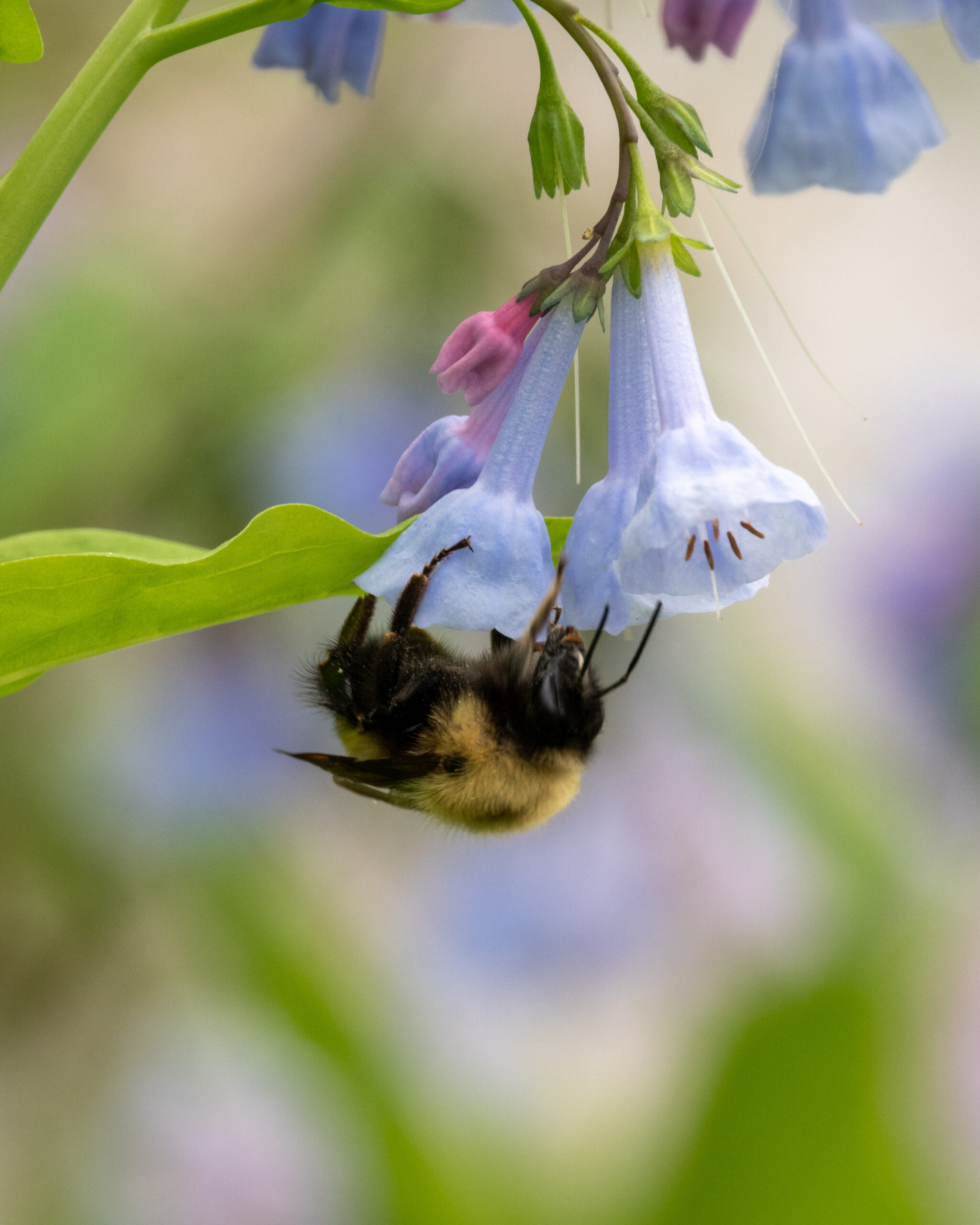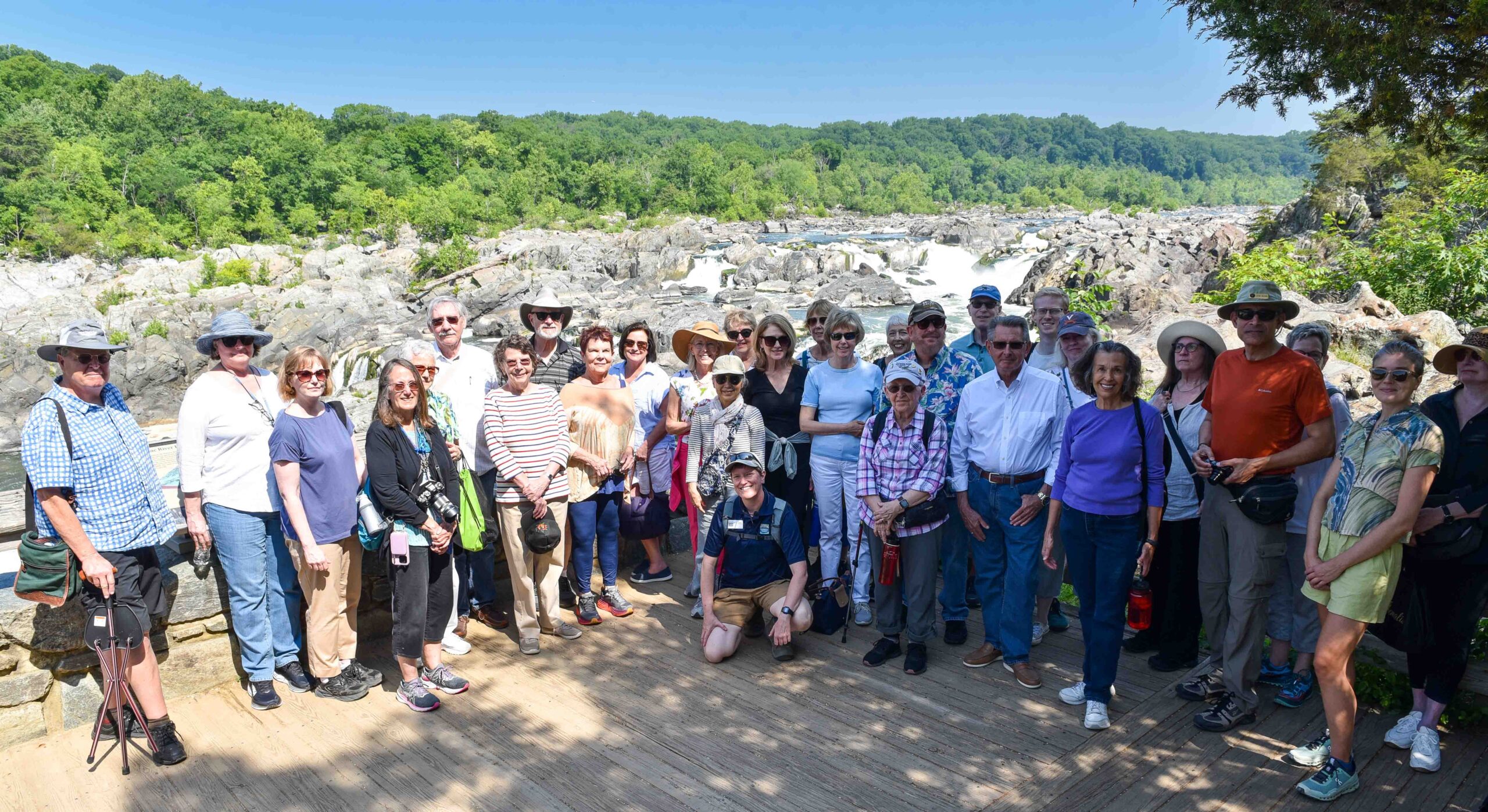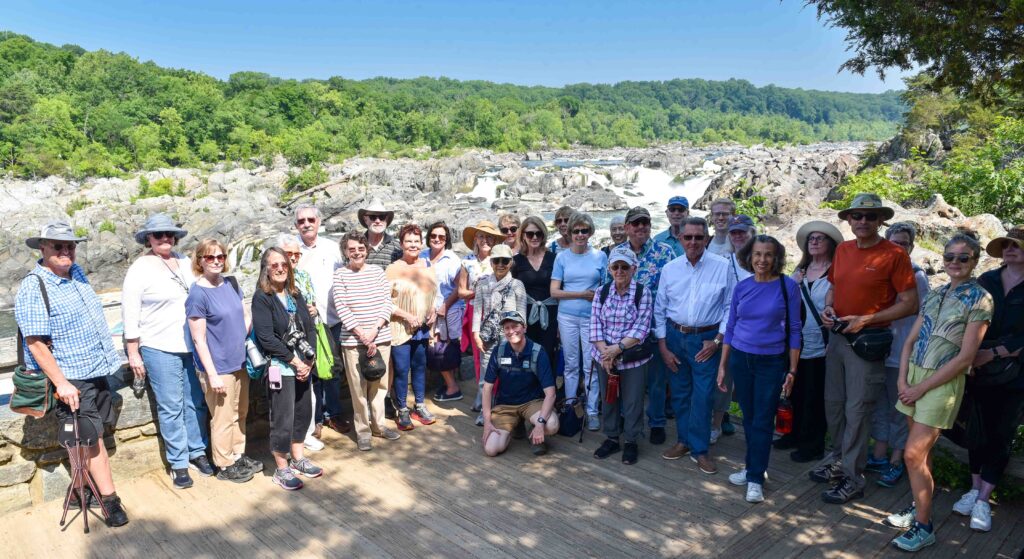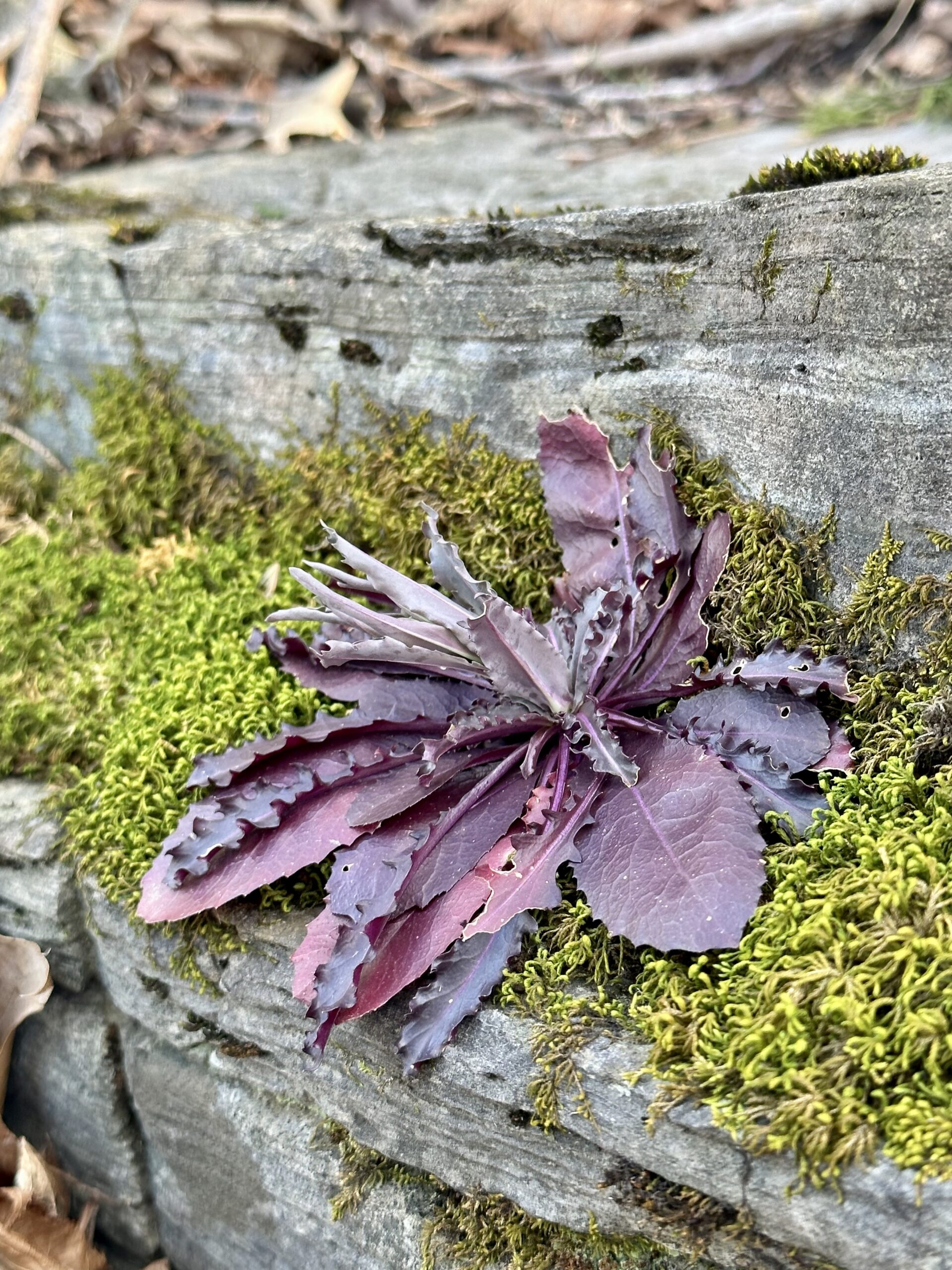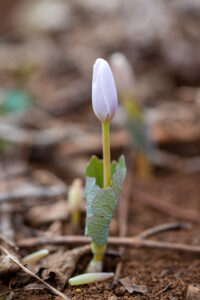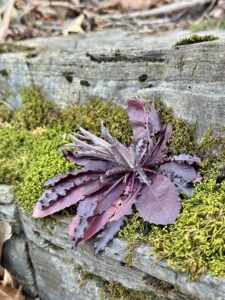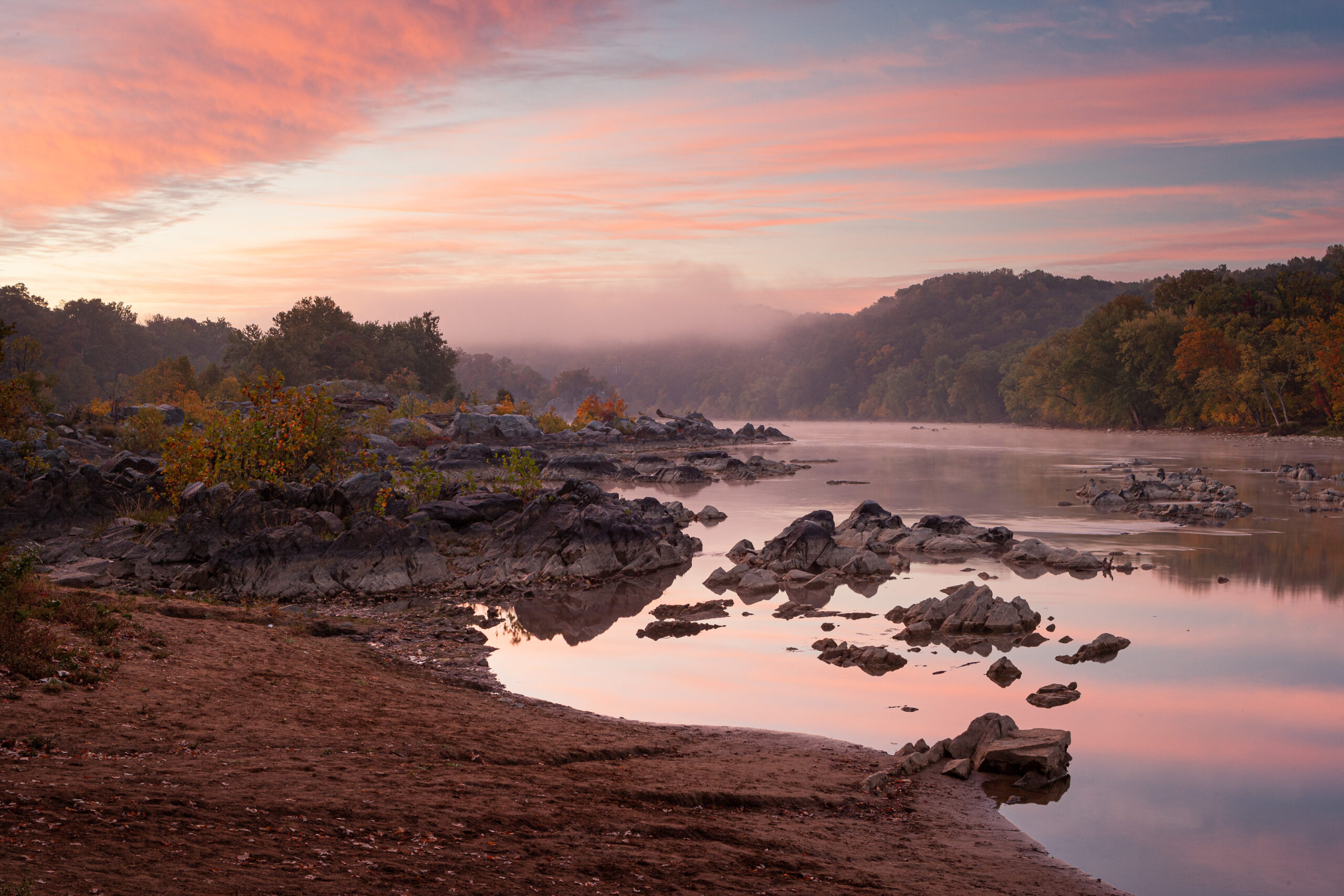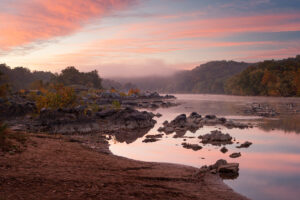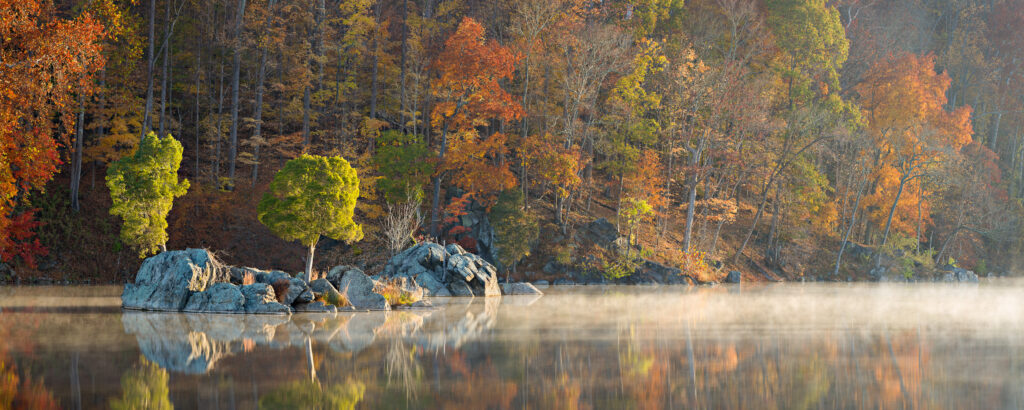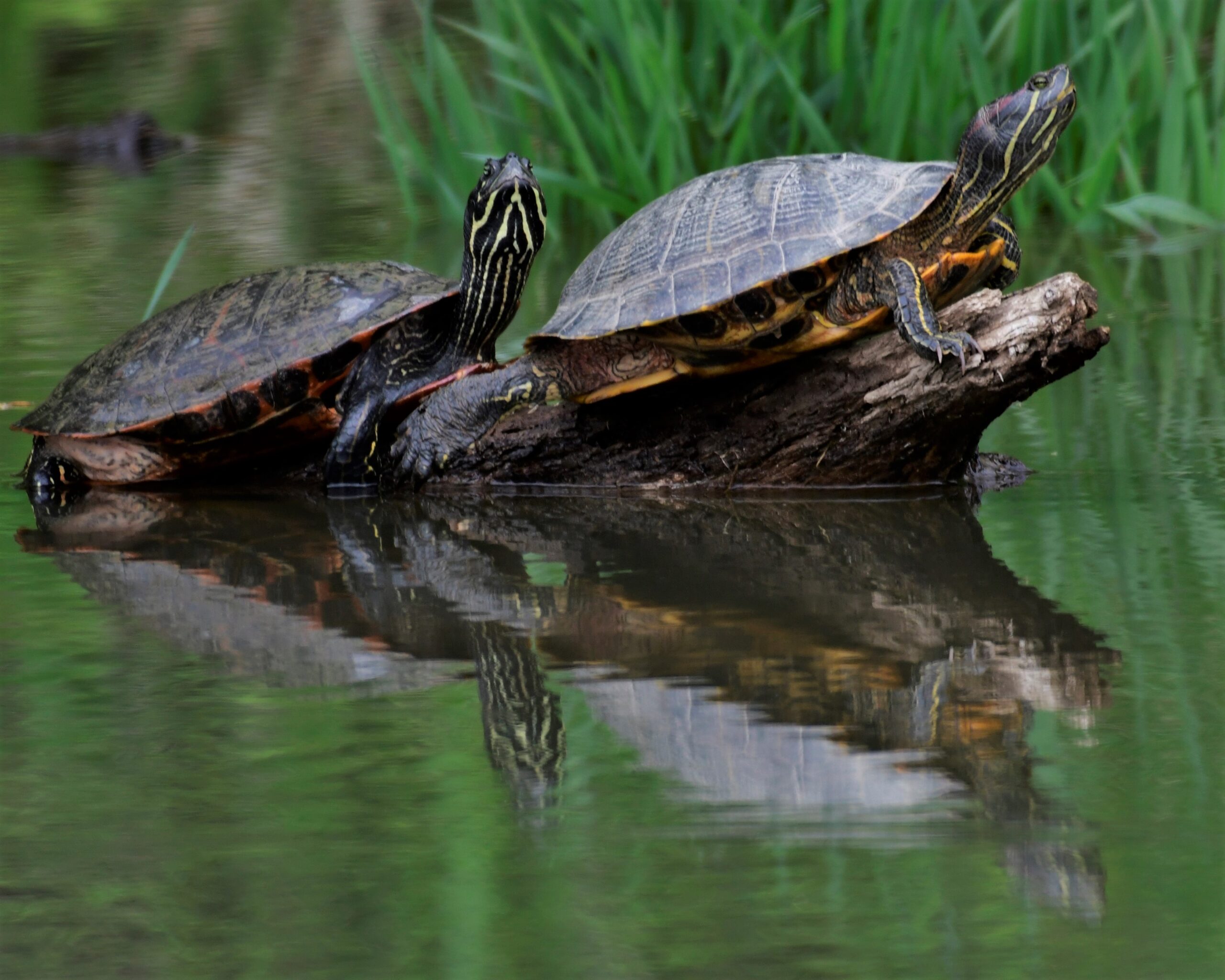Take a walk on the C&O Canal towpath in the spring or summer and you’re likely to spot turtles sunning themselves on logs in the canal or perhaps along the towpath. Have you ever wondered where those turtles go during the winter months?
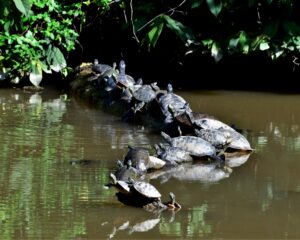
Photo by Jan Branscome
Turtles brumate during the winter, similar to hibernation in mammals. Brumation is a semi-dormant winter cool-down that allows turtles to survive when food is scarce and temperatures are much colder. During brumation, turtles can still move but they live off of stored fat and their metabolism slows.
The canal is home to three different types and several species of turtles: the Eastern Snapping Turtle (Chelydra serpentina serpentina), Basking Turtles, and the Eastern Box Turtle (Terrapene carolina carolina).
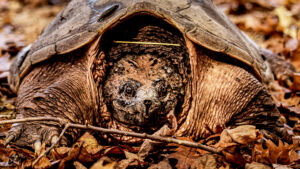
Photo by Paul Graunke
Eastern snapping turtles are a common find throughout the C&O Canal. As their name suggests, these omnivores have long necks, quick reactions, and are aggressive on land. These large reptiles are almost exclusively aquatic: they occupy the canal and the Potomac River except for land travel during the spring and early summer for mating and nesting. Females lay an average of 50 eggs between April and November. Snapping turtles can be identified by their flat oval brown shell, wide flat heads, bulky limbs, and long alligator-like tail. They weigh between 10 and 35 pounds and are the largest freshwater turtle in Maryland. Eastern snapping turtles dive down to the muddy bottom of the canal and the Potomac River in the winter, remaining alert to light and temperature.
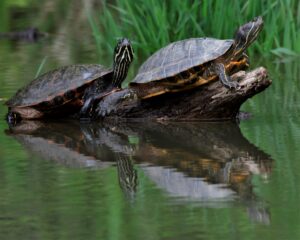
Photo by Jan Branscome
Basking turtles are a frequent sight throughout the canal and in slow-moving or still portions of the river where they can be viewed swimming and sunning themselves on logs or rocks. These turtles rarely ever leave the water except for nesting in the spring and early summer. Eastern Painted Turtles (Chrysemys picta picta) can be identified by their olive-brown to black shells with red markings on the edge, yellow spots on either side of their black head, yellow stripes along the jaw and through the eyes, and yellow or orange belly. These omnivores are just 4.5 to 6 inches long.
Similar species include the non-native Red Eared Slider (Trachemys scripta elegans), and native Northern Red-Bellied Cooter (Pseudemys rubriventris) which are both slightly larger than Painted Turtles. The presence of a red oval-shaped marking behind the eye helps identify Red Eared Sliders from the narrower yellow lines on the Red-Bellied Cooter’s head. Red Eared Sliders are omnivores and are typically 8 to 13 inches long. Red-Bellied Cooter’s are omnivores as juveniles and herbivores as adults, growing 10 to 12.5 inches in length. All basking turtles stay buried in the mud beneath the water during the winter months, occasionally rising to the surface for food or air.
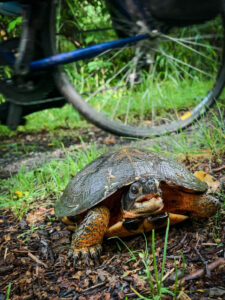
Photo by Garner Woodall
Eastern box turtles are the most terrestrial turtle native to the C&O Canal. They are named for their boxy, high-domed shell and they have the ability to close up their body using a hinge on the shell’s underside. These omnivores can be found throughout the Park, in both forested and open habitats. Like all other turtle species in the C&O Canal, they are most active in the spring and early summer. Box turtles are usually dark brown with gold or orange blotched patterns on the shell, orange scales on the head, neck, and front limbs, and have brown or red eyes, which differ based on the sex of the turtle (typically red for males, yellow-brown for females). They grow to be 4.5 to 6 inches in length, burrowing deep under the soil and leaves to brumate during the winter months.
